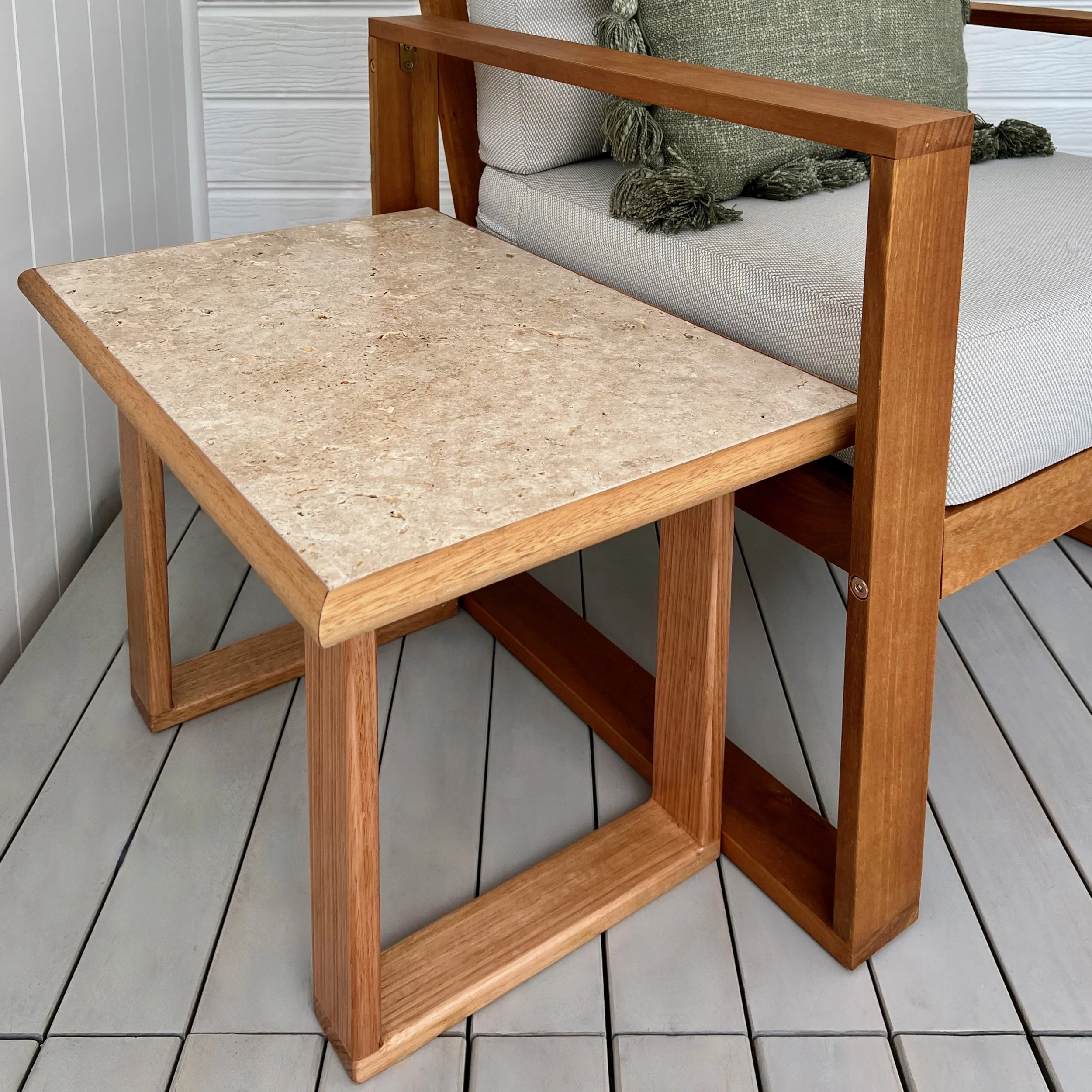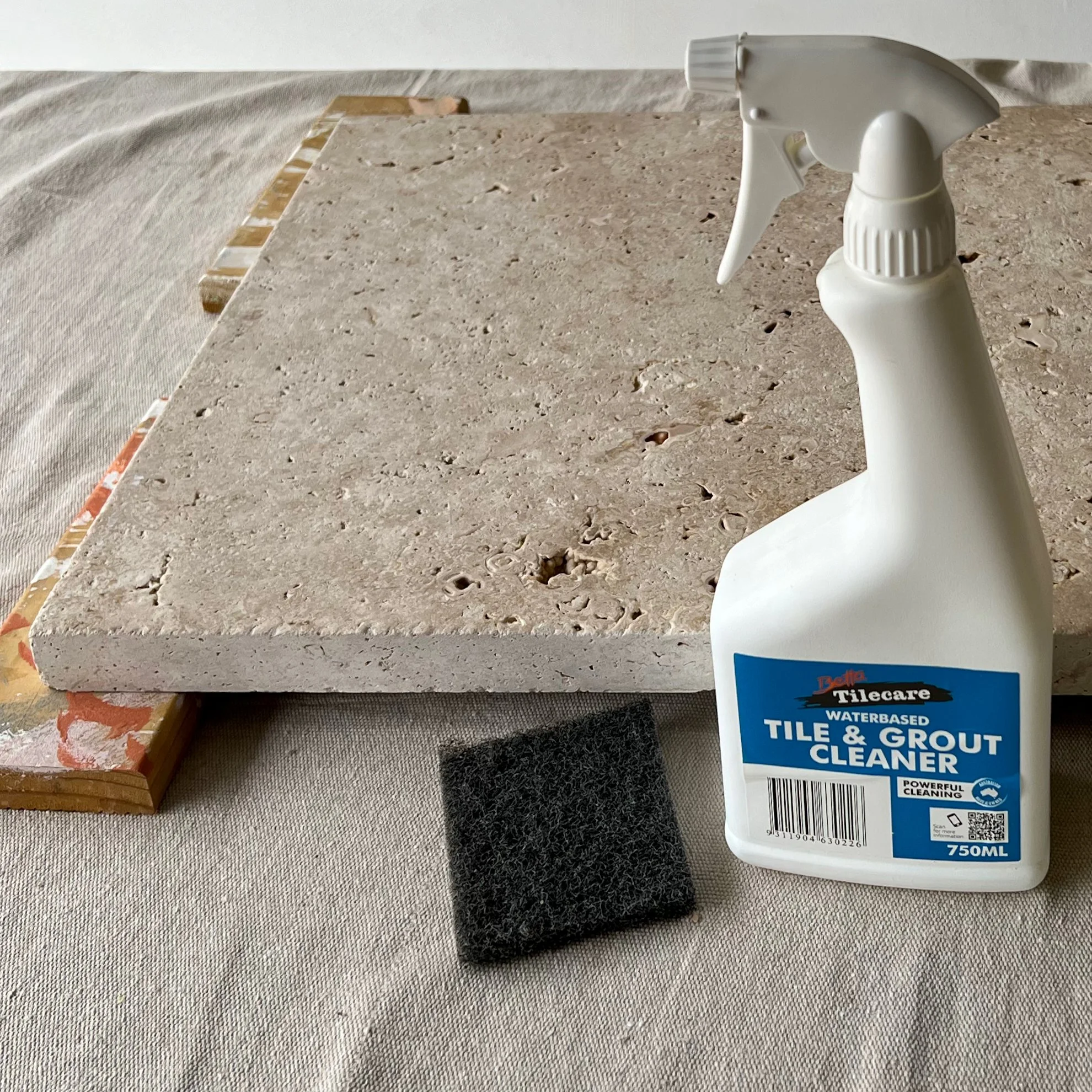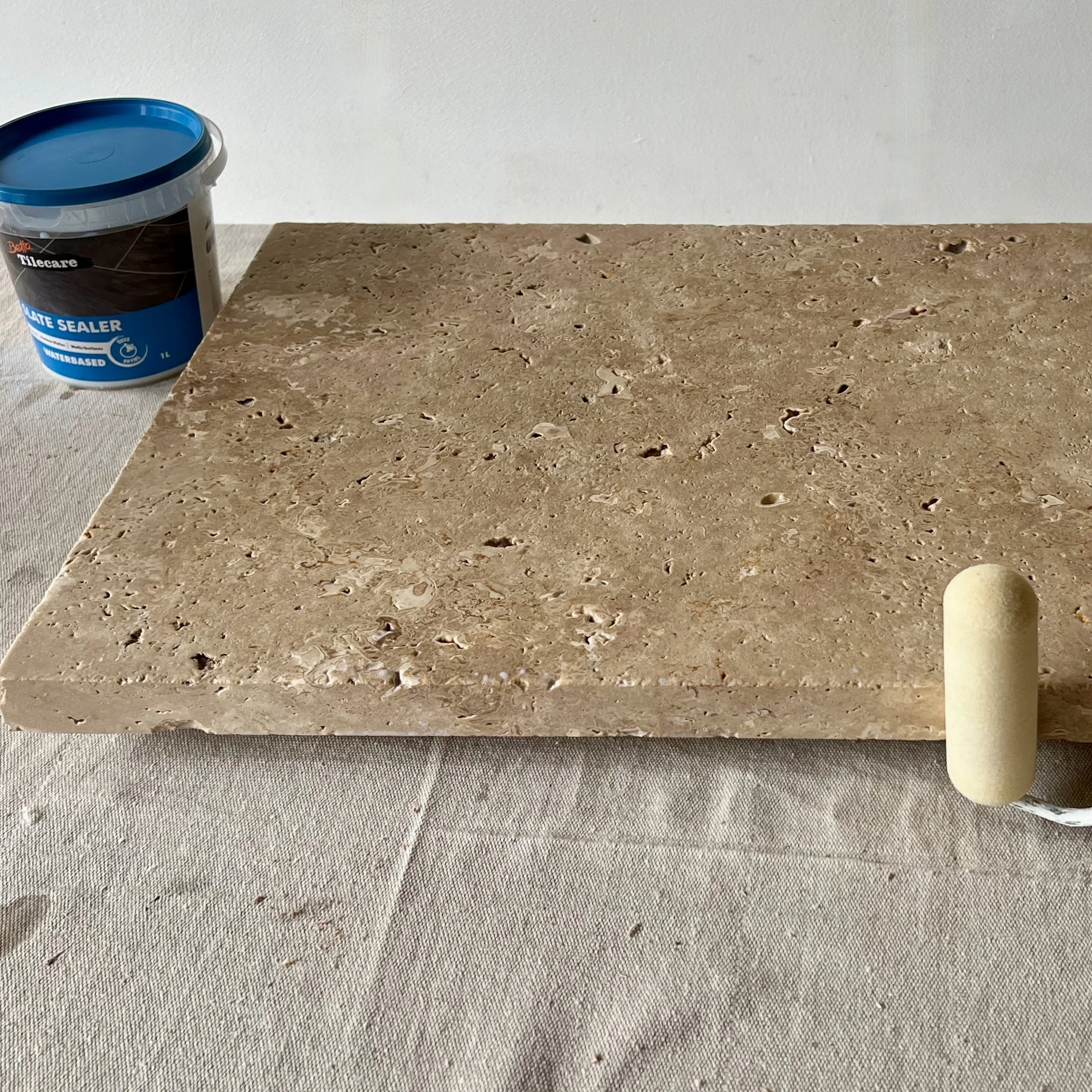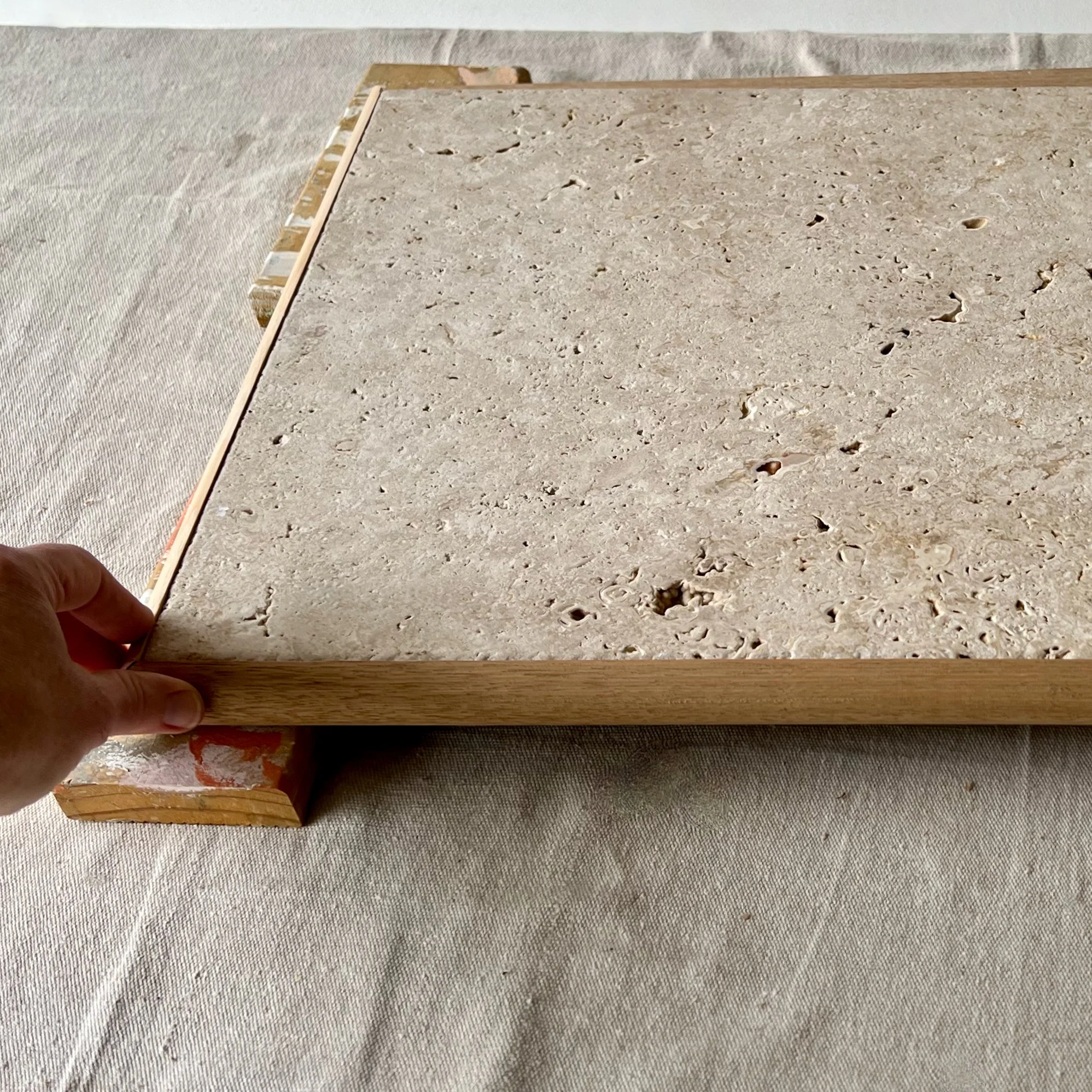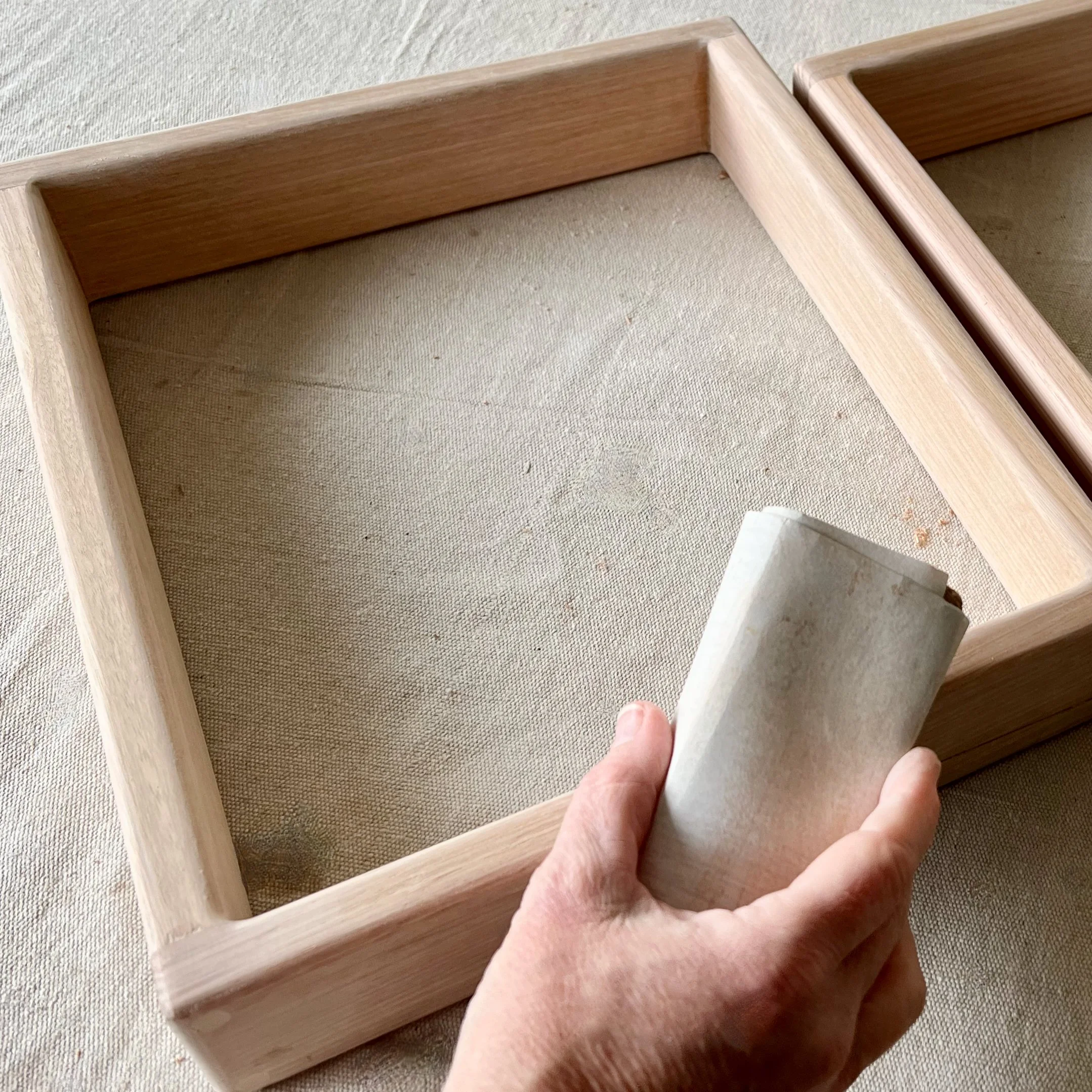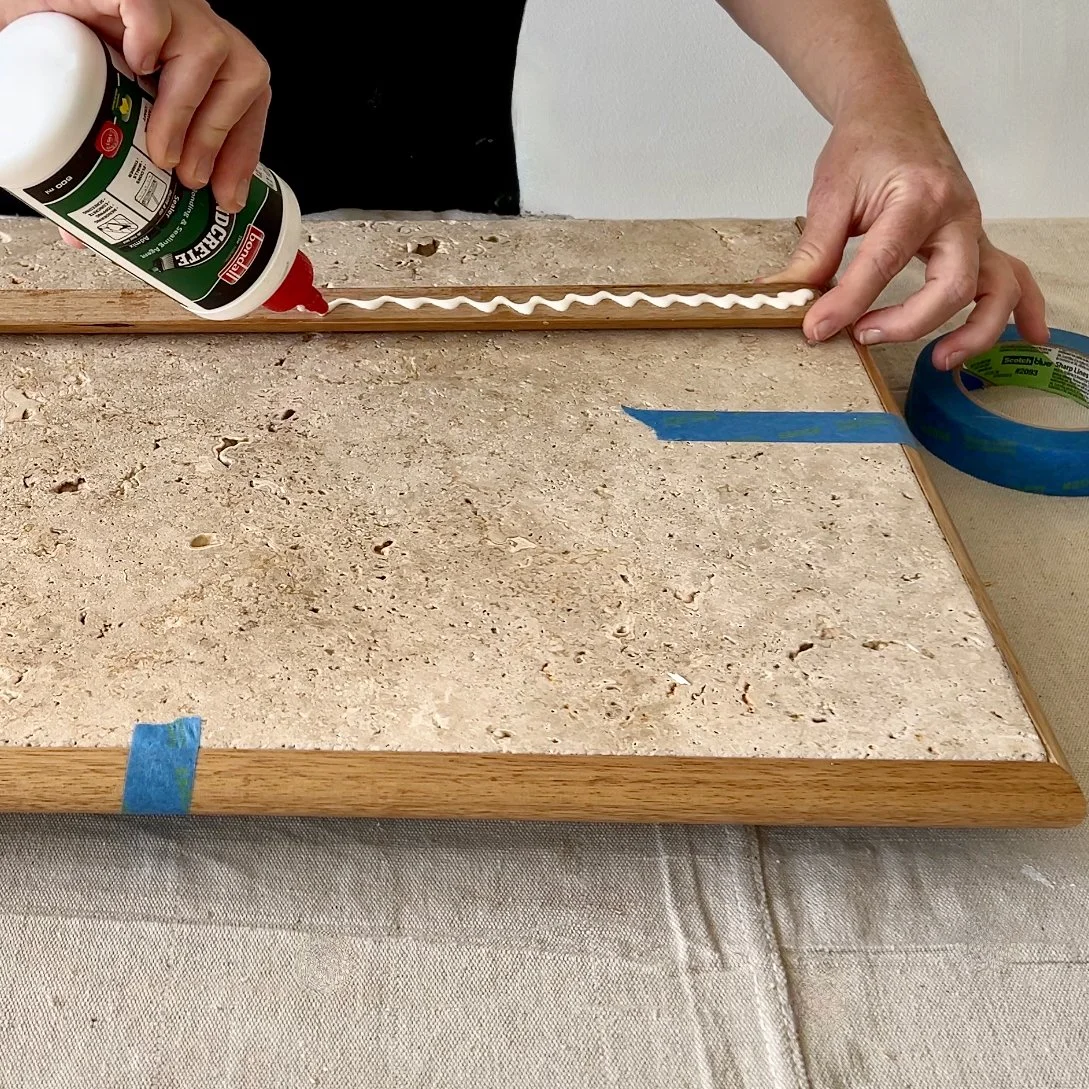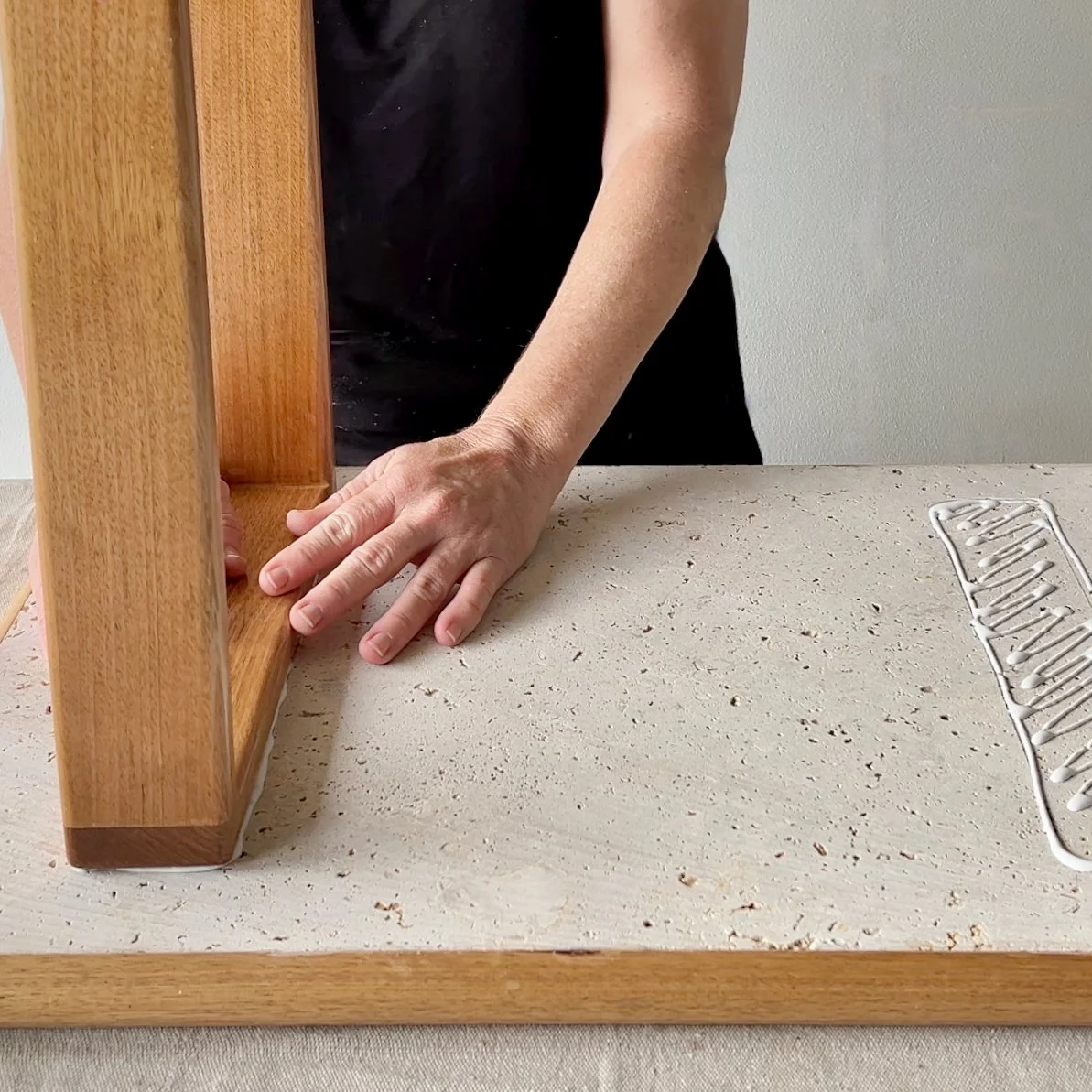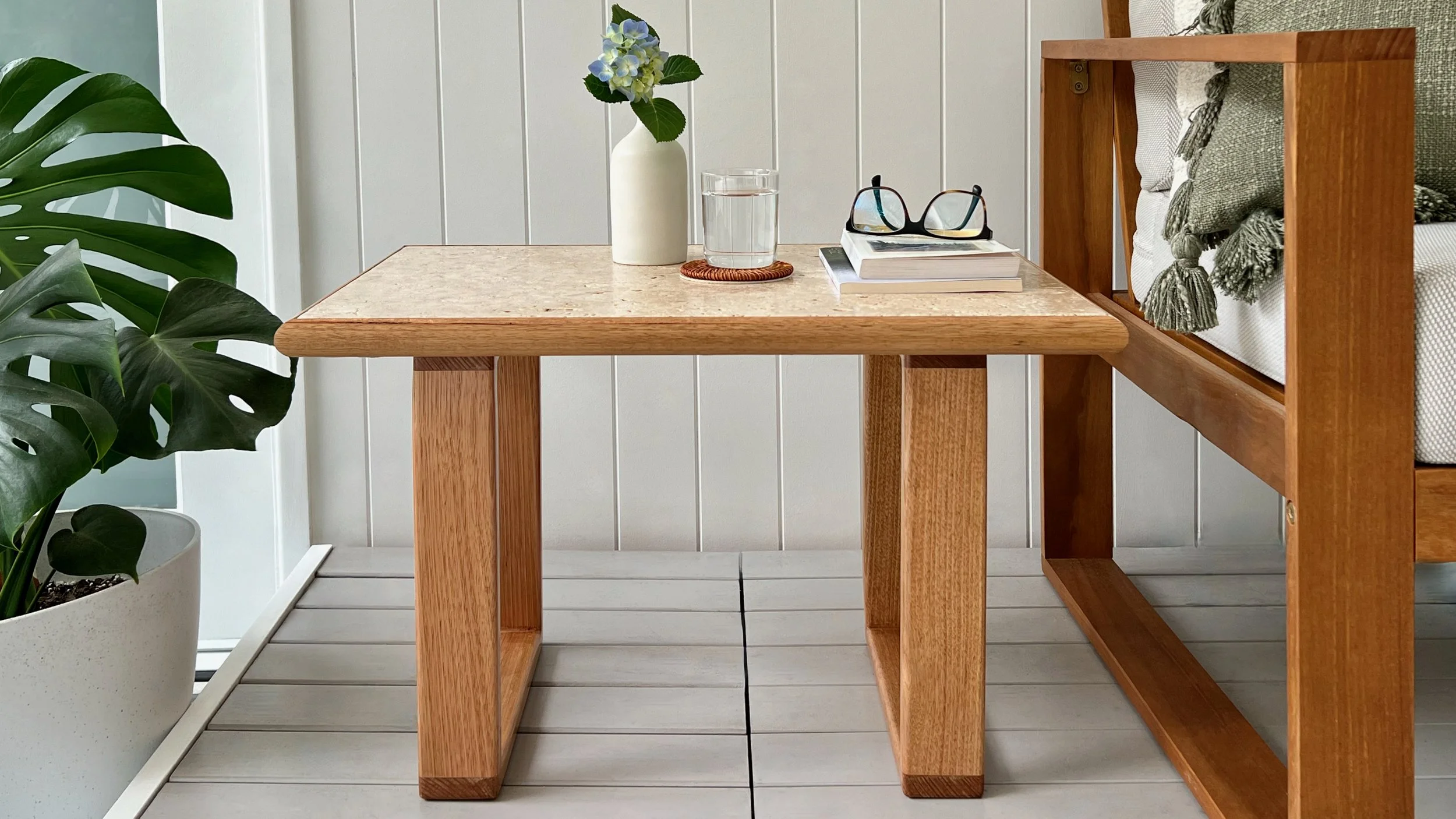$26 Travertine Table
Natasha Dickins
I made this little table for next to nix by using leftover building materials and a large travertine paver that cost about $26.
You’ll also need a 2.4m length of 30mm half-round dowel for the frame, two 1.8m lengths of 65mm x 19mm Tasmanian oak for the base and 40mm countersunk screws.
The finished table neatly tucks into the side of any classic Mimosa armchair or lounge.
“This is a simple idea that can be adapted to frame any type of paver using leftover building materials. The key is in sealing the top for a lovely tactile surface.”
First I prepped the 610mm x 406mm x 30mm paver all over with Bondall’s Betta Tilecare Tile & Grout Cleaner and a soft scourer, then spritzed with water to remove the solution, wiped it clean and left it to dry.
To seal, I used a mini foam roller to apply two coats of Bondall Betta Tilecare Slate Sealer, leaving them to dry after each. The result is a smooth, slightly glossy finish that’s easy to keep clean.
The frame is made from half-round dowel the same width as the depth of the paver. I used a mitre saw to cut the sides to fit then sanded them with 180-grit.
TIP If you’re not confident doing mitres, use 30mm x 12mm DAR moulding instead of dowel, cut to length with a handsaw and butt-join the corners.
To make the bases, I cut four 330mm sides and four 320mm stretchers from 65mm Tasmanian oak. Then pre-drilled 10mm from ends of the stretches with a combination countersinking bit, butted the sides against them and secured with Bondcrete woodworking adhesive and 40mm screws.
After sanding over the screw holes and smoothing into them with timber filler, I used a trim router with a round-over bit along the edges and corners then sanded again.
TIP If you don’t have a trim router, simply use 120-grit abrasive paper to remove sharp edges before sanding.
I wiped away dust from all timber pieces pieces with a damp cloth. Then applied two coats of Monocel Gold Exterior Clear Varnish in Satin with a mini mohair roller, leaving to dry after each. I avoided sealing the tops and inside the frame pieces where they would join the paver.
TIP Sealing the timber in marine-grade varnish gives a tough finish that protects from moisture and UV damage so the table can be used outside under cover.
Bondall’s Bondcrete adhesive bonds most porous materials and is great for adhering timber to the paver. I ran it along the back of the frame pieces and used painter’s tape to hold them in place to dry.
To assemble the table, I centred the bases 90mm in from the ends, checking with a combination square. I marked around them with a pencil, applied adhesive then repositioned them.
TIP Ensure a solid bond by adding weight with two full cans of paint and leaving the adhesive to cure thoroughly overnight.
The finished table is quite heavy, so avoid putting pressure on the adhesive joints by lifting, rather than dragging it, to move.
Will you be upcycling a travertine paver into a table ?
Tag me on your project and follow more of my DIY journey on Instagram for tool tips, home improvement and simple building tutorials.

